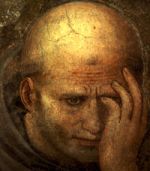Explaining the angry tone of today’s Catholic news coverage
By Phil Lawler ( bio - articles - email ) | Nov 21, 2018
Another American diocese is headed for bankruptcy court. Did you even notice our story on Monday?
Free eBook:

|
| Free eBook: Catholic Quagmire |
When I founded Catholic World News, back in 1996, it was inconceivable that a Catholic diocese would seek bankruptcy protection. I can vividly recall the first tentative discussions of the possibility, which arose in 2002 as the Boston archdiocese faced the prospect of sex-abuse settlements running into hundreds of millions of dollars. Even then, veteran observers agreed that the Vatican would never approve a bankruptcy. As it happens the Boston archdiocese never did take that step. But if my count is accurate, 18 other dioceses now have taken it.
And to be honest, my count might not be completely accurate, because a diocesan bankruptcy no longer commands headline coverage. When CWN began providing daily headlines, a bankruptcy filing would unquestionably have been the top news story of the day—probably the most stunning story of the month. Now it is almost routine: another verse of the same sad song.
Similarly, back in 1996 a credible complaint about a priest accused of molesting a boy would have shocked our readers. Now such stories appear in the secular media literally every day. Unless there is something unusual about them, CWN no longer even carries links to those reports.
Have our editorial standards changed? Or has there been a dramatic change in the nature of the news that we cover? I think it is the latter. What was stunning in 1996 is not at all surprising today. One more complaint against a priest, one more accusation of a cover-up, one more million-dollar settlement of a lawsuit: these stories no longer command the same level of public attention. By now everyone knows the story; it is not essential to hear one more variation on the theme.
The news of the Catholic world has changed in other ways, too, since CWN headlines first appeared. In 1996 it was very rare for one bishop to engage in public criticism of another. A careful reader could discern differences among the bishops, couched in cautious, respectful language so that only specialists would understand the nature of the disagreements. Open criticism of the Vatican by Catholic bishops—or of Catholic bishops by the Vatican—was nearly unthinkable.
No longer. More than 80 American Catholic bishops have issued statements calling for a thorough investigation of the McCarrick scandal—and in many cases clearly demanding an accounting for the Vatican’s role in that affair. Meanwhile Pope Francis inveighs against “airport bishops,” discusses the “diseases” of the Roman Curia, and scolds the members of the Synod of Bishops at the conclusion of their session. Conflicts that were once muted are now carried out in full voice; debates that took place behind closed doors are now the stuff of media headlines.
So it is not surprising that the coverage of Catholic news has also become more openly partisan. Catholic journalists denounce and ridicule each other through the social media. One of the Pope’s closest confidants calls for the suppression of the world’s largest Catholic television network. A priest who works with the Vatican press office advises people to avoid conservative outlets, and recommends (among other outlets) the National Catholic Reporter—a paper that, according to two different bishops in the diocese where it is located, does not deserve to be described as “Catholic.” Personal attacks—attacks on an individual’s alleged motives, rather than on the substance of what he says—have become depressingly common.
Although I am not shy about voicing my own opinions in editorial columns, I have always sought to ensure that Catholic World News is a reasonably objective news source. We do not engage in speculation; we do not carry stories that we cannot verify; we do not set out to shock our readers. We try to provide context without inserting opinions into our news coverage. Years ago a veteran newsman recommended a standard by which I still measure news stories: Readers with different opinions, absorbing the facts as they are laid out in our coverage, should be able to reach different conclusions.
Sure enough, our readers do have different opinions. Some tell us that we are too aggressive in pursuing stories about corruption in the Church; others say that we are not aggressive enough. Some think we are too quick to draw conclusions; others wonder why we are so slow. Constructive criticism from our readers helps us to maintain a balance. Please keep it coming!
Media coverage of the Catholic world was more genteel back in 1996. But if news stories often seem to carry an angry tone that coverage reflects the rising anger among American Catholics today. With our Church caught up in a crisis of historic proportions, those of us who love the Church sometimes find it challenging to speak softly rather than shouting. But we try.
All comments are moderated. To lighten our editing burden, only current donors are allowed to Sound Off. If you are a current donor, log in to see the comment form; otherwise please support our work, and Sound Off!







